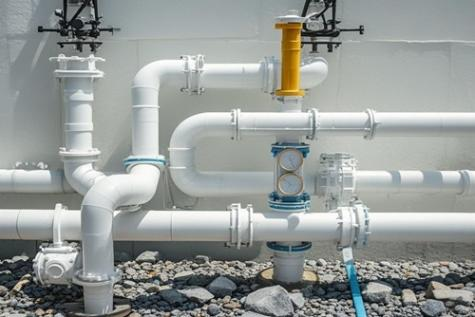In the field of urban infrastructure, pipes play a vital role in ensuring the smooth functioning of various essential services. From water supply to drainage, distribution, gas and heat, GKBM Pipes are designed to fulfil the various needs of modern cities. In this blog, we will take an in-depth look at the different types of GKBM piping types as well as their uses, advantages and disadvantages.

1. Introduction: Water supply pipelines are a basic part of municipal infrastructure and are mainly used to transport water for domestic use, production and firefighting. The water from the source is processed and then transported to each user terminal through the water supply pipeline to meet people's daily water needs and water needs in the industrial production process.
2. Advantages: various materials to meet different needs; good sealing to avoid leakage and ensure the stability of water supply; high pressure resistance to ensure that the water can be transported to different heights of the user.
3. Disadvantages: some of the materials may have corrosion problems; plastic water supply pipe is relatively poor resistance to high temperature, long-term high temperature environment may be deformed; some materials have limited strength of the water supply pipe, may be damaged by the impact of external forces or heavy pressure.
Drainage Pipe
1. Introduction: used for discharging domestic sewage, industrial wastewater and rainwater. All kinds of wastewater and rainwater are collected and conveyed to sewage treatment plants or natural water bodies for treatment or discharge to keep the environment clean and hygienic.
2. Advantages: it can remove wastewater and rainwater in time, prevent waterlogging and flooding, and maintain the hygiene and safety of the production and living environment; different drainage pipes can be set up according to the classification of water quality, which is convenient for the collection and treatment of wastewater.
3.Disadvantages: easy to silt debris, the need for regular cleaning and maintenance, otherwise it may lead to clogging; long-term erosion by sewage and wastewater, part of the material of the pipeline may be corrosion damage.
Gas Pipe
1. Introduction: Specially used for conveying natural gas, gas and other combustible gases. The gas will be transported from the gas source to residential households, commercial users and industrial users, etc., for cooking, heating, industrial production, etc..
2. Advantages: good sealing, can effectively prevent gas leakage, to ensure the safety of use; has good pressure resistance and corrosion resistance.
3. Disadvantages: the installation and maintenance of gas pipelines require high requirements, requiring professionals to operate, otherwise there may be safety hazards; once the gas leakage, may cause fire, explosion and other serious accidents, the danger is greater.
Heat Pipe
1. Introduction: It is used for conveying hot water or steam to provide heating and hot water supply for buildings. Commonly used in central heating system, industrial production of heat supply.
2. Advantages: efficient transmission of heat energy, centralised heating, improve energy efficiency; good thermal insulation performance, can reduce the heat loss in the transmission process.
3. Disadvantages: heat pipe in the operation process will produce thermal expansion, the need to set up compensation devices to ease the thermal stress, increasing the complexity and cost of the system; pipeline surface temperature is high, if the insulation measures are not appropriate, may cause burns.
Cable duct
1. Introduction: Used to protect and lay cables, so that cables can safely cross roads, buildings and other areas, to avoid cable damage and interference from the outside world.
2. Advantages: provides good protection for the cable, preventing damage to the cable due to external factors, to extend the service life of the cable; to facilitate the laying and maintenance of the cable, so that the cable layout is more neat and standardised.
3. Disadvantages: the capacity of cable ducts is limited, when a large number of cables need to be laid, it may be necessary to increase the number of ducts or use other methods; some cable ducts may be eroded by groundwater, chemicals, etc., and need to take appropriate protective measures. If necessary, please contact info@gkbmgroup.com
Post time: Sep-02-2024




